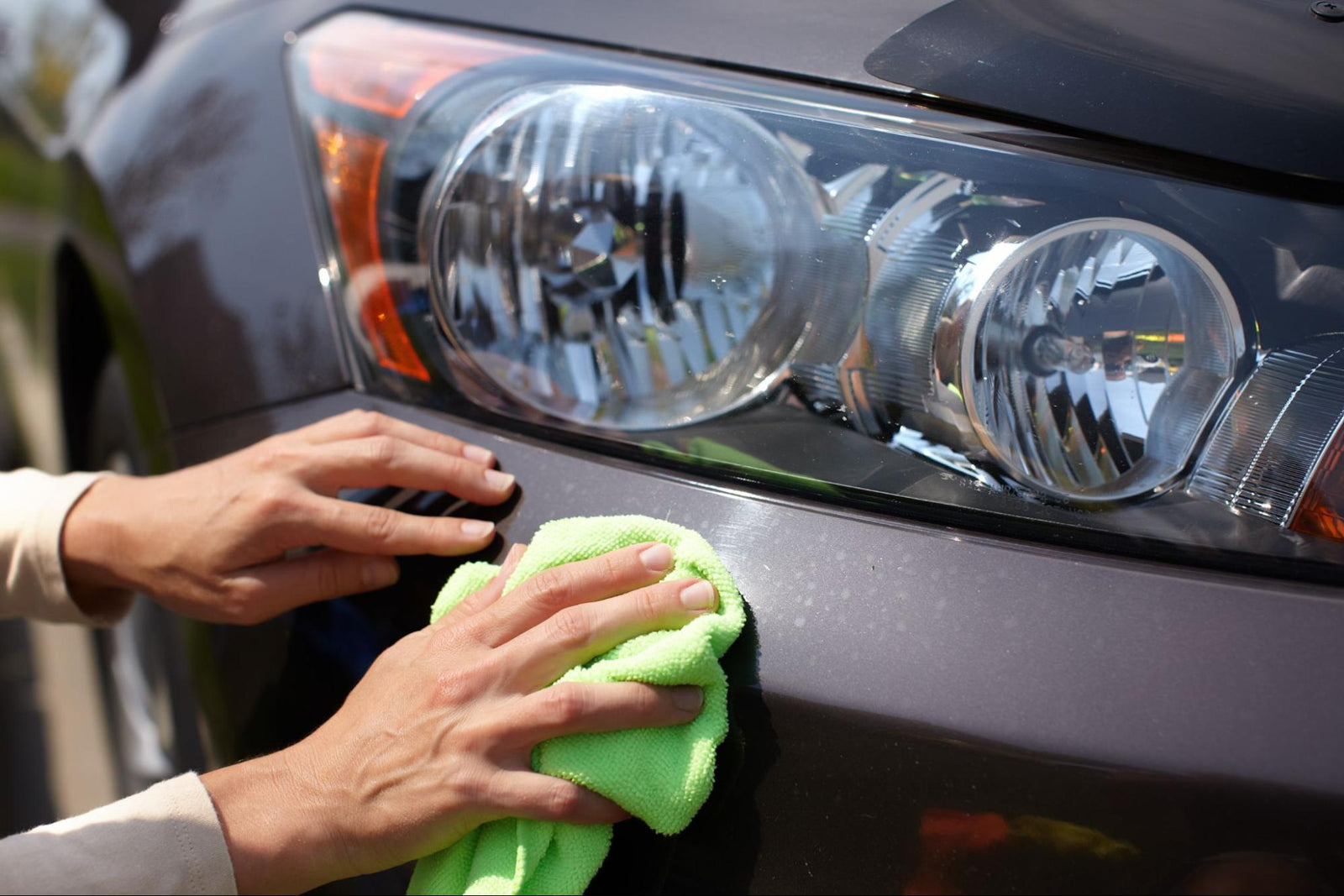Foggy, yellowed headlights look unsightly and can be dangerous by reducing visibility while driving at night. Many DIY solutions have circulated online, leading people to wonder: does toothpaste clean headlights?
Yes, toothpaste can temporarily clean and restore clarity to oxidized headlights due to its mild abrasive properties. However, this effect typically lasts 1-2 months before the haziness returns.
While toothpaste might seem like an appealing quick fix, it's essential to keep reading to understand why professional headlight restoration methods are more effective and longer-lasting and what risks you might face by using toothpaste on your vehicle's headlights.
Why Professional Headlight Restoration Is Better Than Toothpaste
Professional headlight restoration typically involves a multi-step process that addresses the root cause of headlight oxidation. The method includes wet-sanding with progressively finer grits, professional-grade polishing compounds, and, most importantly, applying a UV-resistant protective coating. This coating prevents the headlight from re-oxidizing quickly, making the results last 2-3 years compared to toothpaste's 1-2 months.
The cost of professional restoration typically ranges from $50-100 per pair of headlights in the United States (April 2024 pricing), which is cost-effective when considering the results' longevity and the superior clarity achieved.
COST GUIDE BY REGION (Professional Restoration):
- Major Urban Areas (NYC, LA, Chicago): $75-125 per pair
- Suburban Areas: $50-90 per pair
- Rural Areas: $40-80 per pair
- Mobile Service (at your location): Add $15-30
INTERNATIONAL PRICING (APPROXIMATE):
- Canada: CAD $70-130 per pair
- UK: £45-85 per pair
- Australia: AUD $80-140 per pair
- Germany: €60-110 per pair
When comparing lifetime costs over a 3-year period, professional restoration ($50-100 once) typically costs less than repeated DIY kit applications ($15-40 every 8-12 months) while providing better results and requiring less of your time.
What Are The Risks Of Using Toothpaste On Headlights?
Using toothpaste as a headlight cleaner comes with several potential risks that should be carefully considered:
SAFETY PRECAUTIONS:
- Always wear protective gloves to prevent skin irritation from abrasives
- Use safety glasses to protect eyes from splashes and debris
- Work in a well-ventilated area, especially when using commercial products
- Cover surrounding paint with masking tape to prevent accidental damage
- Keep all compounds away from children and pets
- Wash hands thoroughly after handling any restoration materials
The abrasives in toothpaste are not calibrated for automotive use and typically range from 1-4 μm in size (compared to the controlled 3-15 μm in automotive compounds). These non-uniform abrasives can create micro-scratches in the headlight surface that may not be immediately visible. Under microscopic examination, we found these scratches can accelerate future oxidation by providing more surface area for UV damage, potentially worsening the problem in the long run.
Additionally, toothpaste often contains ingredients like fluoride and other chemicals that are not meant for use on automotive surfaces. These substances could react with the plastic and cause additional damage or discoloration.
What Are Some Effective Alternatives To Professional Restoration?
If professional restoration isn't in your budget, several DIY alternatives work better than toothpaste. Auto parts stores sell headlight restoration kits for $15-30, including proper automotive-grade sandpaper, polishing compounds, and UV sealant. While requiring more effort than toothpaste, these kits provide results that can last up to a year when properly applied.
For severely oxidized headlights, another option is to purchase replacement headlight assemblies. While more expensive initially ($100-300 per headlight), new headlights provide perfect clarity and come with fresh UV protection from the factory.
How Often Should Headlights Be Restored?
Most headlights should be restored every 2-3 years, depending on exposure to sunlight and environmental conditions. Vehicles parked outside regularly or in areas with intense sun exposure may need more frequent restoration. The key is to address haziness as soon as it becomes noticeable, as severely oxidized headlights are more complex and expensive to restore.
Regular washing and waxing of headlights can help extend the time between restorations. Some car waxes contain UV protectants that can provide an extra layer of defense against oxidation.
Can You Prevent Headlight Oxidation?
While oxidation is a natural process that eventually affects all polycarbonate headlights, several preventive measures can significantly slow it down. Applying a UV-protective film or coating to new or newly restored headlights is the most effective method. These protective layers typically cost $20-40 and can extend the life of clear headlights by several years.
Parking in a garage or using a car cover helps prevent oxidation by reducing UV exposure. For those who must park outside, facing the vehicle north or south (rather than east or west) can minimize direct sun exposure on the headlights during peak UV hours.
Additionally, avoiding harsh car wash chemicals and keeping headlights clean of road debris can help maintain clarity. Many automatic car washes use aggressive cleaners that can strip away factory UV protection, so hand washing is often the gentler choice for headlight maintenance.
Take Action Today
If your headlights show signs of oxidation, skip the toothpaste trick and invest in a quality headlight restoration kit from your local auto parts store. Not only will this give you better results than toothpaste, but the included UV sealant will help protect your headlights from future damage, keeping you safer on the road and saving you money in the long run.
Looking for high-quality emergency lights? Ultra Bright Lightz has you covered.


